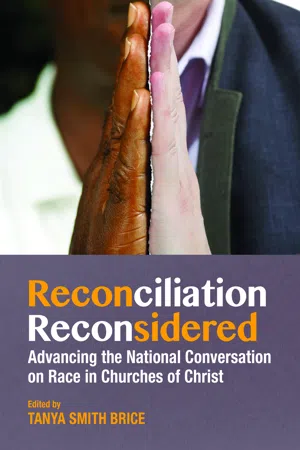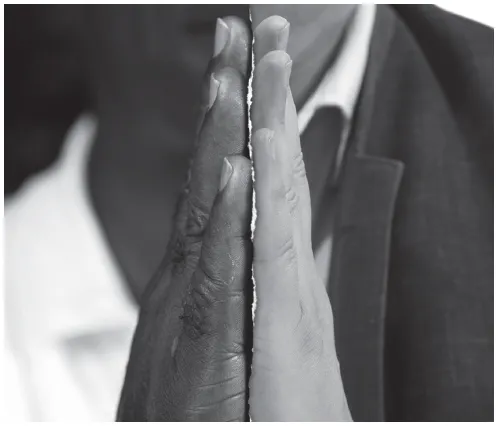![]()
HISTORICAL REALITIES
![]()
1968 and the Reshaping of the Separation Between Black and White Churches of Christ
by Douglas A. Foster
The Larger Context of 1968
ON FEBRUARY 8TH, 1968, THE THIRD NIGHT OF A PEACEFUL PROTEST staged largely by students from the historic black South Carolina State University at a whites-only bowling alley in Orangeburg, state troopers with shotguns opened fire on the protesters. Three teenage college students were killed, and twenty-seven injured, many seriously.1
The next month, students at the renowned black Howard University in Washington, DC staged a five-day sit-in, laying siege to the administration building and shutting down the university. Reflecting the sentiments on campuses across the country, the Howard students were protesting the school’s ROTC program that supplied a stream of young men for service in the Vietnam War. They also demanded, among other things, a new curriculum more relevant to black history and culture.2
Twelve days later, on April 4th, Martin Luther King, Jr. was shot and killed at the Lorraine Motel in Memphis, Tennessee. Two days later, Eldridge Cleaver and fourteen members of the Black Panther Party for Self-Defense were involved in a shootout with Oakland, California police that left three officers and two Panthers wounded. Later that night Oakland police retaliated by attacking a house where Black Panthers were staying. Though the leaders in the house surrendered and were taken into custody, officers pushed sixteen-year old Bobby Hutton into the street then shot him twelve times.3
In July 1968, black militants led by Fred Evans engaged in a fierce three-day gunfight with police in the Glenville neighborhood of Cleveland, Ohio. After the all-white National Guard had “restored order,” seven lay dead, including three police officers and three militants, with many others injured.4
In many ways, 1968 was the pinnacle of racial violence during the Civil Rights movement. A clear shift was taking place among black leaders. The peaceful resistance of Martin Luther King, Jr. was increasingly being replaced by calls for an active defense against white violence and denial of rights from voices like Stokely Carmichael. These five incidents are merely a sampling of the events that spotlighted the vast divide between whites and blacks in the United States reflecting the ideology of white supremacy that was so insidiously entrenched and destructive in the country.
This was the context for what happened in Churches of Christ in 1968. Churches of Christ reflected, as they always have, the larger culture, including their responses to these events. Many believed these events were a threat to the very survival of the nation. A handful of black and white leaders in these churches began to ask how they could respond in a way that might begin the healing of the divisions so deeply embedded in the fabric of the nation, and the church.
Four significant events that year provide essential insights into the matter of race relations in Churches of Christ in the Civil Rights era, with profound implications for Churches of Christ today: the Race Relations Workshop at the Schrader Lane Church of Christ in Nashville, Tennessee, March 4 to 8; the Atlanta Race Relations Workshop, June 25 and 26; the July issue of 20th Century Christian magazine titled, “Christ and Race Relations”; and a series of four radio broadcasts by Herald of Truth the same month dealing explicitly with race for the first time in the ministry’s history.
Schrader Lane Race Relations Workshop
From March 4–8th, the Schrader Lane Church of Christ in Nashville, Tennessee, a predominantly black congregation, hosted a race relations workshop aimed at black and white members of Churches of Christ in Middle Tennessee. The church’s minister, Dr. David Jones, and others had become convinced, in light of the frightening rise in racial violence, that it was imperative to come together to respond as Christians. Unlike a small invitation-only meeting held in Nashville two years earlier,5 organizers publicized the meeting to every Church of Christ in Nashville/ Davidson County and urged all concerned Christians to participate.
The Christian Chronicle published a special issue dated May 10 that included the texts of all eleven speeches as well as background material to the meeting, lists of suggested actions, and photographs of those attending.6 In the opening message, David Jones noted the rising disgust of young Christians with the hypocrisy with which the church had dealt with the “race problem.” As an illustration, he recounted a recent incident in which a white minister from Churches of Christ stood and announced in an all-white neighborhood meeting that favored Negros moving in, that he was leading a group opposing such a move. When such a thing can happen, Jones insisted, “we need to be here.”
In his final argument for this race relations meeting, Jones noted the serious need for white Christians to become aware of the deep psychological and sociological damage paternalism had inflicted on blacks. Whites almost universally assumed a benevolent (and superior) attitude toward their black sisters and brothers, providing church buildings and giving song books, Bibles, etc. Such actions made the whites feel good and removed any reason to treat their black sisters and brothers as equals in the full Christian sense. However, these white donations were all too often items ready to be discarded from use and in poor condition. Though black leaders gave warm smiles and received such benevolent gifts with open arms, in actuality, they tucked these substandard donations away into forgotten corners. Pulling no punches, Jones accused the black church—especially the preachers—of perpetuating “the subservient position of the Negro because the white Church and its conscience-soothing gifts represented its meal ticket.”7
Jones boldly exposed the fact that white Christians had no concept of the damage done by, or even the reality of, the systemic and consistent discrimination—even if “benevolent”—that was behind the rising black rage so incomprehensible to white members of Churches of Christ. “I don’t think we really know each other,” he said. “By this, I mean we’re not really aware of the feelings, attitudes, habits, and customs of the other group. We only have notions about what we’re supposed to be like and how we’re supposed to act while around each other.”8
The second message was by white Nashville businessman Lawrence L. (Bud) Stumbaugh, who delivered perhaps the most biting of all the presentations. He warned the audience that he was “going to inflict some red-hot realism” upon them. “I intend to raise a howl of calamity about the past, present, and persistent failure of the church to be what it ought to be.” “The problem of the nation,” he continued, “Cannot be properly labeled the Negro Problem. It was and always had been a white problem.”9
Stumbaugh recounted the horrors of slavery and the white Christian rationalization of the institution. He exposed the absurdity of whites blaming blacks for the current unrest in the nation as comparable to accusing a doctor who diagnoses a patient’s cancer of causing the cancer. “The black man was blinded by the white man, so to speak, and then condemned for not being able to see. The very people who had amputated his legs were now criticizing him for being a cripple.” Stumbaugh had begun his speech with the frank confession that what bothered his conscience most deeply was “the realization that one does not have to be grossly wicked to be immoral, just spineless.” He closed with an endorsement of “black power,” and urged black Christians to use black power “more humanely and morally” than whites had used the white power they had exercised for so long.10
Three other major addresses and six shorter statements by college students were surrounded by question and answer sessions. The Christian Chronicle reported that attendance at the five-night workshop ranged from 357 on the first night, to a high of 708. While the ratio of blacks and whites was roughly equal at least one night, most audiences were majority black.11 And despite the strong, clear and inspiring messages and discussion, little seemed to change.
Atlanta Race Relations Workshop
The second event was the Atlanta Race Relations Workshop held at the Hilton Hotel at Hapeville, Georgia, June 25–26. This was an invitation-only meeting that included over forty leaders in black and white Churches of Christ. Behind the scenes were white evangelists John Allen Chalk, Walter Burch and Dwain Evans, who had been involved in other gatherings on race relations including the Nashville meeting in 1966, but were deemed too controversial to be the “up-front” leaders of this meeting. Respected ministers Eugene Lawton of Newark, New Jersey; R. C. Wells of the Harlem Church of Christ in New York; and Jimmy Allen of Searcy, Arkansas chaired the meeting.12 White attendees included college Presidents John Stevens (ACU) and Clifton Ganus (Harding), publishers Jim Bill McInteer (20th Century Christian) and Ralph Sweet (Sweet Publishing), as well as leaders of Herald of Truth John Allen Chalk, James W. Nichols, and Highland Church of Christ elder Art Haddox. Among black leaders were widely respected ministers Franklin D. Florence, Humphrey Foutz, Andrew J. Hairston, R. N. Hogan, G. P. Holt, David Jones, and Orum Lee Trone, Sr.13
Andrew Hairston, minister for the Simpson Street Church of Christ and widely respected Atlanta lawyer and judge, spoke first on “Spiritual Equality in Christ.” He insisted that Christians must regard racial segregation as sin and must regard every person as a whole being. Abilene Christian College faculty member Carl Spain followed, denouncing racial discrimination as evil. He struck at the way white Churches of Christ interpreted scripture, seen in the utter failure to understand the nature of the inclusivity of Christ’s Church. “Our basic sin is lying in the handling of the Bible. We have mishandled the word of God.” “We were taught wrong,” he exclaimed.14
The group met for two days, and at the end of the workshop they produced a document that acknowledged the sin of racial prejudice widespread throughout Churches of Christ. The document proposed a list of actions designed to help end “discrimination in all of its forms in the life of the church.” The document included proposals for local churches, church-related institutions (colleges), the Herald of Truth, publishing companies and Christian bookstores, Christian-owned businesses, and for all individual Christians. Proposals included integrating congregations; increasing the number of black students, faculty and trustees at Christian colleges; speaking against racism on Herald of Truth and using black speakers for the radio and television broadcasts; publishing materials by black leaders;...

